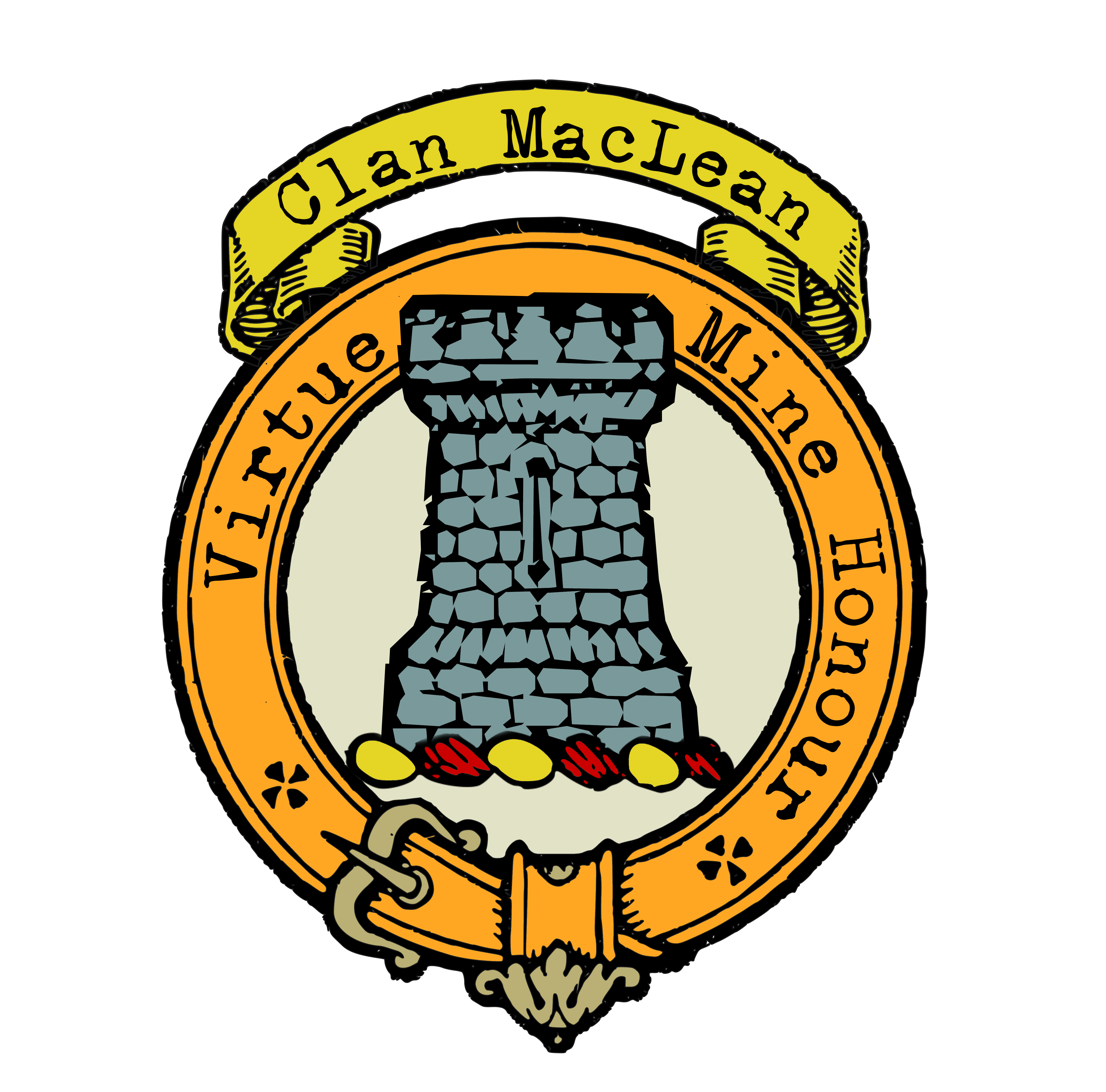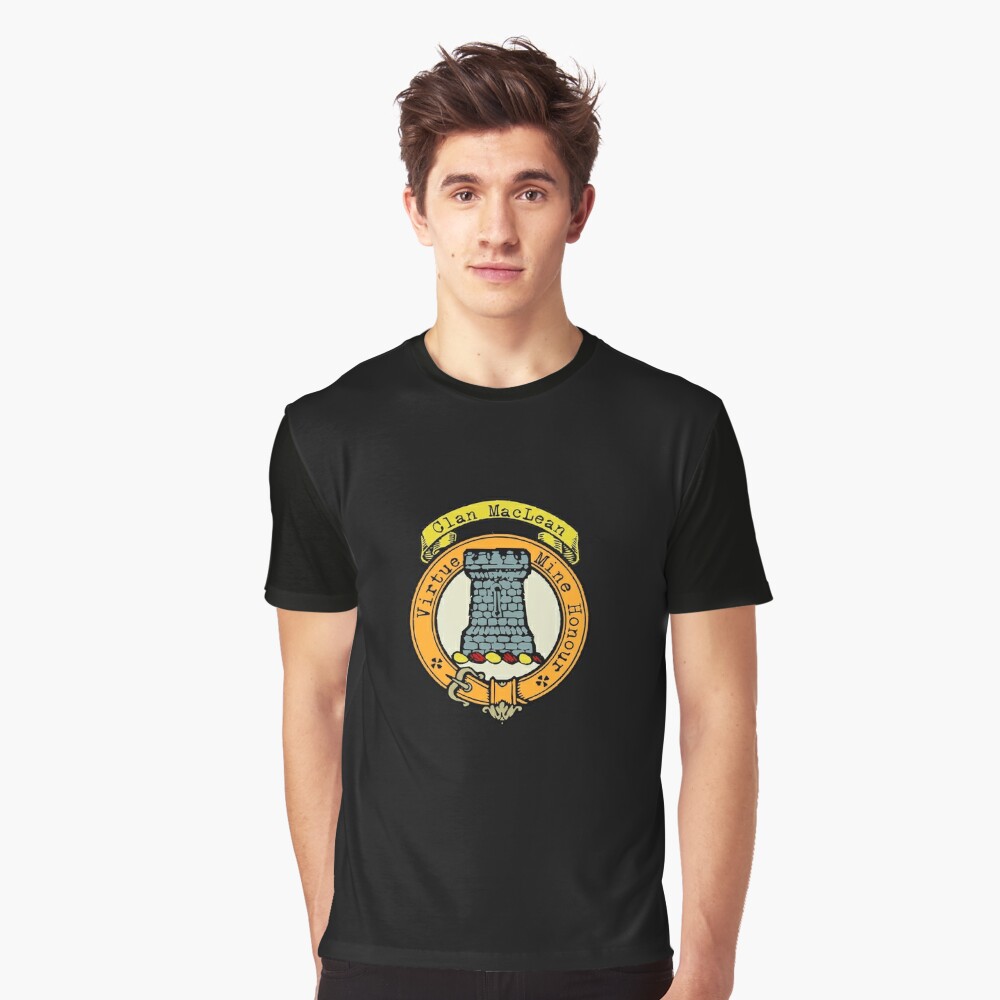Clan MacLean
|
|
CREST: A tower embattled Argent MOTTO: Virtue mine honour TRANSLATION: My Virtues are my Honour VARIATIONS: McLean |
 The MacLean clan traces its lineage to the legendary warrior, Gilleathan Na Tuaidh, renowned as Gillean of the Battle-axe. An esteemed figure in the annals of Scottish history, Gillean fought valiantly at the Battle of Largs in 1263. This pivotal conflict saw the defeat of the Norwegian King Haakon’s army, ending the Norse hegemony over the Hebrides and asserting Scotland’s dominion over these isles. The MacLean clan traces its lineage to the legendary warrior, Gilleathan Na Tuaidh, renowned as Gillean of the Battle-axe. An esteemed figure in the annals of Scottish history, Gillean fought valiantly at the Battle of Largs in 1263. This pivotal conflict saw the defeat of the Norwegian King Haakon’s army, ending the Norse hegemony over the Hebrides and asserting Scotland’s dominion over these isles.
The MacLeans rapidly rose in prominence, claiming significant territories across Mull, Tiree, Islay, Jura, and Knapdale. Their power and prestige were further solidified through strategic marriages, most notably with the family of John of Islay, the first Lord of the Isles. These unions brought them substantial influence, but also ignited conflicts with rival clans, particularly the Mackinnons and the Campbells. One such marriage, between Lachlan Maclean and Lady Elizabeth Campbell, ended tragically when Maclean marooned his wife on a rock, resulting in his untimely demise at the hands of her brother. These tumultuous alliances demonstrated the intricate and delicate web of Scottish politics during those times. The MacLeans demonstrated unwavering support for the Stuart cause during the Jacobite uprisings of the 17th and 18th centuries. Sir Hector Maclean, a Jacobite peer, played a pivotal role in leading the clan during the ’45 Rebellion. Although the Jacobite cause was ultimately lost at the Battle of Culloden, the MacLeans fought valiantly and served their country with distinction. Throughout their history, the MacLeans upheld a strong martial tradition. Many of their chiefs were esteemed soldiers, achieving high ranks and valorously participating in battles, both at home and abroad. Their legacy as warriors earned them respect and fear among their adversaries. As the tides of history ebbed and flowed, the MacLean clan witnessed moments of triumph and tribulation. The decline in fortunes during the late 17th and 18th centuries was followed by a gradual resurgence. In 1911, the chiefs reclaimed and restored the iconic Duart Castle, a powerful symbol of their heritage and resilience. |
|
Citations:
|
|

Purchase @ Redbubble
Purchase @ Amazon.com
Purchase @ Amazon.co.uk

